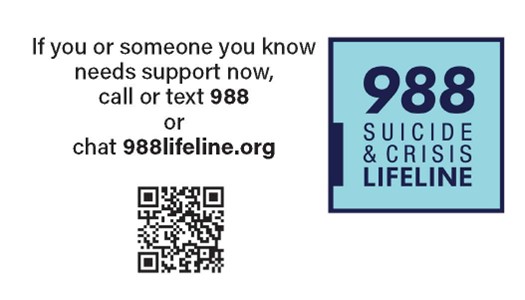New Research Offers Insights on Youth Suicide Trends
Two recent studies from the American Journal of Psychiatry examine trends in suicidal thoughts and suicides among youth. One study found that one in four high school students experienced suicidal ideation in the past year and that targeted screening based on behavioral risks may be missing many youth. Another study identified Black girls as having especially high rates of suicide.
Screening all students
Researchers, led by Tanner J. Bommersbach, M.D., M.P.H., with the University of Wisconsin, examined data on past-year suicidal thoughts and attempts among 119,000 high school students from the 2007 to 2021 Youth Risk Behavior Survey (Centers for Disease Control and Prevention).
They found significant increases in suicidal plans and attempts from 2017 to 2021. In 2021, nearly 1 in 4 high school students reported suicidal ideation in the past year and 1 in ten reported a suicide attempt. In addition,
- The increase in suicidal thoughts was disproportionately high among females, non-Hispanic White and Black students, and students with depressive symptoms.
- The increase in suicide attempts rose disproportionately among non-Hispanic White and Black students and high school seniors.
The researchers examined 24 health-risk behaviors/factors across five categories, including: 1) violence related behavior (bullied at school, bullied online, involved in a physical fight, threatened with a weapon, carrying a weapon, etc.); 2) activity/sedentary behavior (e.g., time watching TV/social media; frequency of physical activity; hours sleeping, etc.); 3) weight-related factors (overweight/obese); 4) substance use (alcohol, cannabis, cigarettes, cocaine, etc.); and 5) sexual activity.
Between 2007 and 2021, the students, regardless of behavioral risk, generally reported similar rates of suicidal symptoms. However, there was a disproportionately large increase in suicidal thoughts and attempts among students who used cigarettes or cannabis. The authors conclude that these findings “point to a need to identify adolescents with suicidal symptoms who may not be identified with targeted screening based on behavioral risks.”
Black girls at especially high risk
In the second study, researcher Ran Barzilay, M.D., Ph.D., with Children’s Hospital of Philadelphia and Penn Medicine, Philadelphia, and colleagues, looked at data on youth suicidal thoughts and suicide attempts.
They analyzed data on youth suicidal ideation and suicide attempts from three sets of data:
- The Adolescent Brain Cognitive Development Study (ABCD Study, more than 11,000 youth ages 9–15 years during 2016 and 2022).
- The 2021 Youth Risk Behavior Survey (YRBS, more than 16,000 high school students in grades 9 to 12), conducted by the Centers for Disease Control and Prevention.
- The Children’s Hospital of Philadelphia Emergency Department (CHOP-ED, more than 19,000 youth ages 12 –18 years between 2013 and 2020).
The overall rate of suicidal ideation was 22.5%, and the suicide attempt rate was 8.6%. In all three sets of data, Black girls experienced the higher rates of suicidal ideation and suicide attempt than their white and male peers.
The analysis suggests there are specific factors underpinning the elevated rates among Black girls. And the researchers note that past research has pointed to a “few potential exposures that may disproportionately contribute to suicidal ideation among Black girls, including intimate partner violence, racial discrimination, cyberbullying, and underdiagnosis of depression.”
Some specific therapies or approaches may be especially effective for helping Black girls. Other research, the authors note, has identified culturally relevant interventions such as the Adapted-Coping With Stress Course, attachment-based family therapy(1), and multisystemic therapy(2) that may be effective for Black youths (3, 4).

The authors expressed the hope that the evidence of elevated suicide ideation and attempts among Black adolescent girls leads to greater clinical awareness of the concern and an increase in suicide prevention efforts created for, and disseminated to, Black girls in particular.
If you or someone you know is struggling or experiencing thoughts of suicide or self-harm, know that your are not alone and help is available.
Suicide Resources
- National 988 Crisis Line - call or text 988, or chat 988lifeline.org
- Crisis Textline: text TALK to 741741
- Trevor Project: text START to 678-678, call 866-488-7368 (support for LGBTQ youth)
References
- (1)Attachment-based family therapy is an empirically supported family therapy specifically designed to target family and individual processes associated with adolescent suicide and depression. It aims to foster both positive parent-child relationships and to enhance adolescents’ autonomy and competency.
- (2)Multisystemic Therapy is an intensive family- and community-based treatment program that addresses all environments that impact high risk youth - homes and families, schools and teachers, neighborhoods and friends. Clinicians travel to the youth’s community, work intensively with parents/caregivers, and are available 24/7
- (3) Brown TR, Lee SS, Schiff SJ, et al: A systematic review and meta- analysis: psychotherapy interventions for reducing suicidal thoughts and behaviors among Black youth. J Am Acad Child Adolesc Psychiatry 2024; 22:S0890-8567(24)01328-5
- (4) Robinson WL, Case MH, Whipple CR, et al: Culturally grounded stress reduction and suicide prevention for African American adolescents. Pract Innov (Wash D C) 2016; 1:117–128
- Cooper, A.M., et al. 2025. Prevalence of Suicidal Ideation and Suicide Attempts by Race and Gender in Three Large U.S. Adolescent Cohorts. American Journal of Psychiatry, In Advance, https://doi.org/10.1176/appi.ajp.20240735
- Bommersbach, T. J., et al. 2025. National Trends in Suicidal Thoughts and Suicide Attempts Among High School Students in the United States. American Journal of Psychiatry In Advance, https://doi.org/10.1176/appi.ajp.20240706
